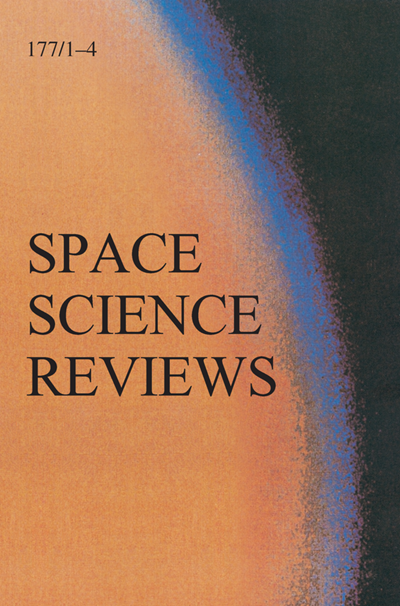A Radiometric Correction Method and Performance Characteristics for PIXL’s Multispectral Analysis Using LEDs
IF 7.4
2区 物理与天体物理
Q1 ASTRONOMY & ASTROPHYSICS
引用次数: 0
Abstract
Abstract The Planetary Instrument for X-ray Lithochemistry (PIXL) onboard the Perseverance rover, part of NASA’s Mars 2020 mission, has the first camera system that utilizes active light sources to generate multispectral data directly on a planetary surface. PIXL collects the multispectral data using three different components in the Optical Fiducial System (OFS): Micro Context Camera (MCC), Floodlight Illuminator (FLI), and Structure light illuminator (SLI). MCC captures images illuminated at different wavelengths by FLI while topography information is obtained by synchronously operating the MCC and SLI. A radiometric calibration for such a system has not been attempted before. Here we present a novel radiometric correction process and verify the output to a mean error of 0.4% by comparing it to calibrated spectral data from the Three Axis N-sample Automated Goniometer for Evaluation Reflectance (TANAGER). We demonstrate that the radiometrically corrected data can clearly discern different features in natural rock and mineral samples. We also conclude that the same radiometric correction process can be used on Mars as the optical system is designed to autonomously compensates for the effects of the Martian environment on the instrument. Having multispectral capabilities has proven to be very valuable for extrapolating the detailed mineral and crystallographic information produced by X-ray spectroscopy from the X-ray system of PIXL.利用led进行像素多光谱分析的辐射校正方法及性能特点
作为美国宇航局火星2020任务的一部分,毅力号火星车上搭载的行星x射线岩石化学仪器(PIXL)拥有首个利用主动光源直接在行星表面生成多光谱数据的相机系统。PIXL使用光学基准系统(OFS)中的三个不同组件收集多光谱数据:微背景相机(MCC),泛光灯照明器(FLI)和结构光照明器(SLI)。MCC捕获FLI在不同波长照射下的图像,同时通过MCC和SLI同步操作获得地形信息。以前从未尝试过对这种系统进行辐射校准。在这里,我们提出了一种新的辐射校正过程,并通过将其与三轴n -样本自动测角仪(TANAGER)的校准光谱数据进行比较,验证了输出的平均误差为0.4%。结果表明,经辐射校正后的数据可以清晰地识别天然岩石和矿物样品的不同特征。我们还得出结论,同样的辐射校正过程可以在火星上使用,因为光学系统被设计为自动补偿火星环境对仪器的影响。具有多光谱的能力已被证明是非常有价值的,可以从PIXL的x射线系统中推断出x射线光谱产生的详细矿物和晶体学信息。
本文章由计算机程序翻译,如有差异,请以英文原文为准。
求助全文
约1分钟内获得全文
求助全文
来源期刊

Space Science Reviews
地学天文-天文与天体物理
CiteScore
19.70
自引率
3.90%
发文量
60
审稿时长
4-8 weeks
期刊介绍:
Space Science Reviews (SSRv) stands as an international journal dedicated to scientific space research, offering a contemporary synthesis across various branches of space exploration. Emphasizing scientific outcomes and instruments, SSRv spans astrophysics, physics of planetary systems, solar physics, and the physics of magnetospheres & interplanetary matter.
Beyond Topical Collections and invited Review Articles, Space Science Reviews welcomes unsolicited Review Articles and Special Communications. The latter encompass papers related to a prior topical volume/collection, report-type papers, or timely contributions addressing a robust combination of space science and technology. These papers succinctly summarize both the science and technology aspects of instruments or missions in a single publication.
 求助内容:
求助内容: 应助结果提醒方式:
应助结果提醒方式:


